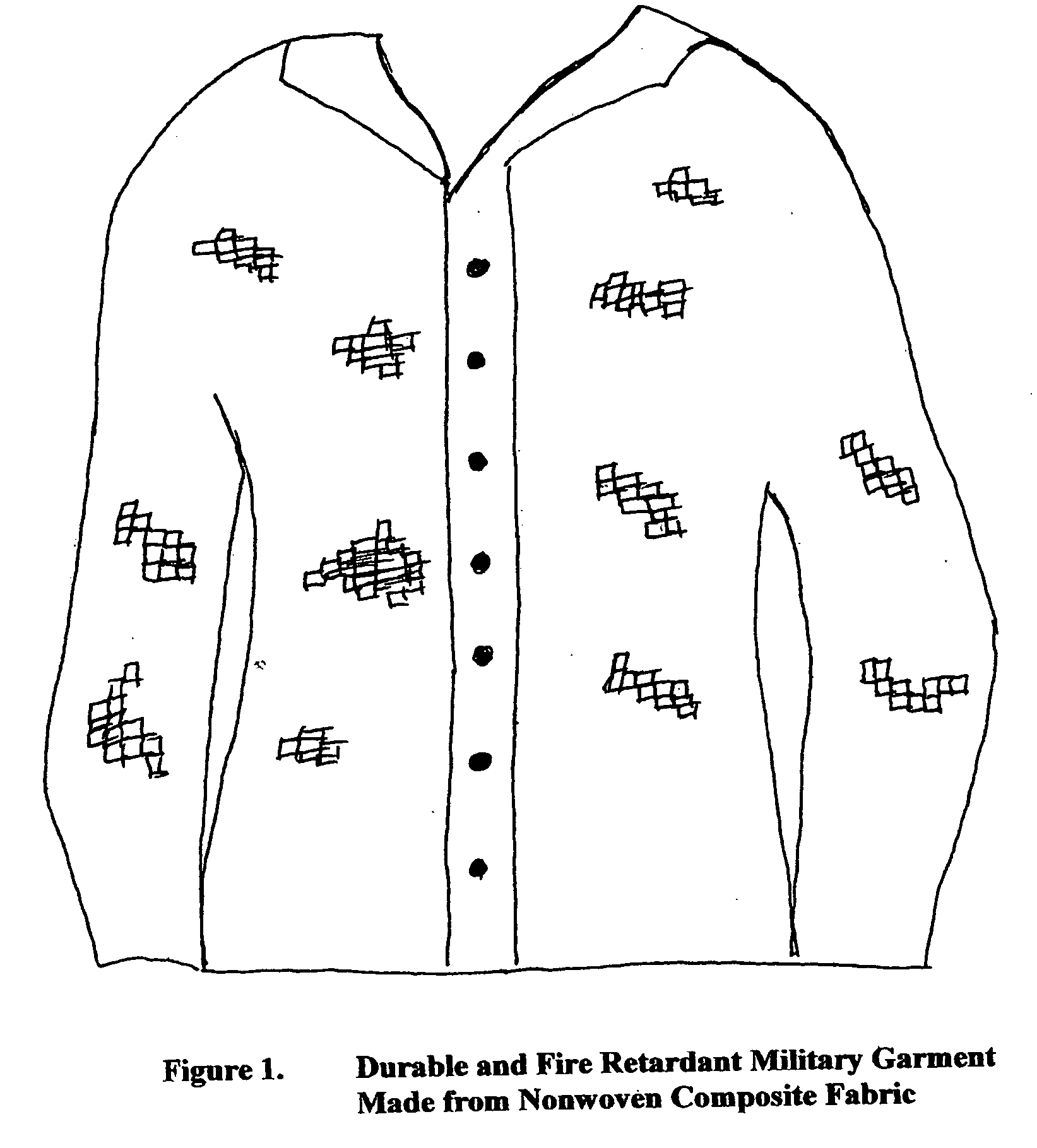Durable and fire resistant nonwoven composite fabric based military combat uniform garment
a nonwoven composite fabric and combat uniform technology, applied in protective garments, weaving, other domestic articles, etc., can solve the problems of slow production speed, slow production speed, inability to penetrate the functional and everyday wear market of nonwoven fabrics, etc., and achieve excellent abrasion resistance and balanced properties.
- Summary
- Abstract
- Description
- Claims
- Application Information
AI Technical Summary
Benefits of technology
Problems solved by technology
Method used
Image
Examples
Embodiment Construction
[0040] In the following detailed description of the invention, specific methods employed to create a unique and novel garment, based on nonwoven composite fabric, are elucidated to enable a full and thorough understanding of the current invention. It should however be recognized, that it is not intended in the following text to limit the invention only to the particular methods described. The specific terms employed to describe the uniqueness of the invention are merely used in the descriptive sense for the purpose of illustration and not for the purpose of limitation. It will be apparent that the invention is susceptible to numerous variations and changes within the spirit of the teachings herein.
[0041] Garment Construction: The present invention is directed to the design and manufacture of a durable, fire resistant, comfortable and economical garment, as shown in FIG. 1, which is based on a nonwoven composite fabric suitable for use in military combat uniform clothing and outdoor...
PUM
| Property | Measurement | Unit |
|---|---|---|
| thickness | aaaaa | aaaaa |
| lengths | aaaaa | aaaaa |
| lengths | aaaaa | aaaaa |
Abstract
Description
Claims
Application Information
 Login to View More
Login to View More - R&D
- Intellectual Property
- Life Sciences
- Materials
- Tech Scout
- Unparalleled Data Quality
- Higher Quality Content
- 60% Fewer Hallucinations
Browse by: Latest US Patents, China's latest patents, Technical Efficacy Thesaurus, Application Domain, Technology Topic, Popular Technical Reports.
© 2025 PatSnap. All rights reserved.Legal|Privacy policy|Modern Slavery Act Transparency Statement|Sitemap|About US| Contact US: help@patsnap.com



